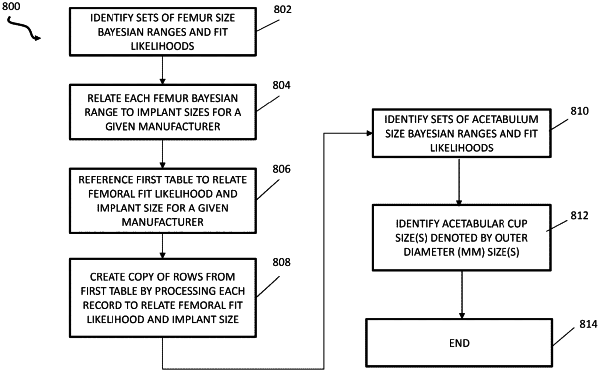| CPC G16H 20/40 (2018.01) [A61B 34/10 (2016.02); A61B 34/25 (2016.02); A61B 2034/102 (2016.02)] | 20 Claims |

|
1. A method for generating a prediction for at least one implant size for use in arthroplasty, the method comprising:
receiving, by at least one processor configured by executing instructions stored on processor readable media, demographic factors of a patient;
processing, by the at least one processor, the demographic factors of the patient to generate a plurality of implant size predictions, wherein the step of processing the demographic factors of the patient includes:
accessing, by the at least one processor, i) procedure information representing joint replacement procedures previously performed for a plurality of patients and ii) implant information representing types and sizes of implants from a plurality of manufacturers; and
determining, by the at least one processor, as a function of at least one statistical model and as a function of the accessed procedural information and the implant information, respective unadjusted probabilities of each of a plurality of implant size recommendations within a range of implant sizes;
providing, by the at least one processor in a graphical user interface operating on at least one user computing device, information representing the respective implant size recommendations and unadjusted probabilities; and
receiving, by the at least one processor, a selection of at least one of the respective implant size recommendations.
|